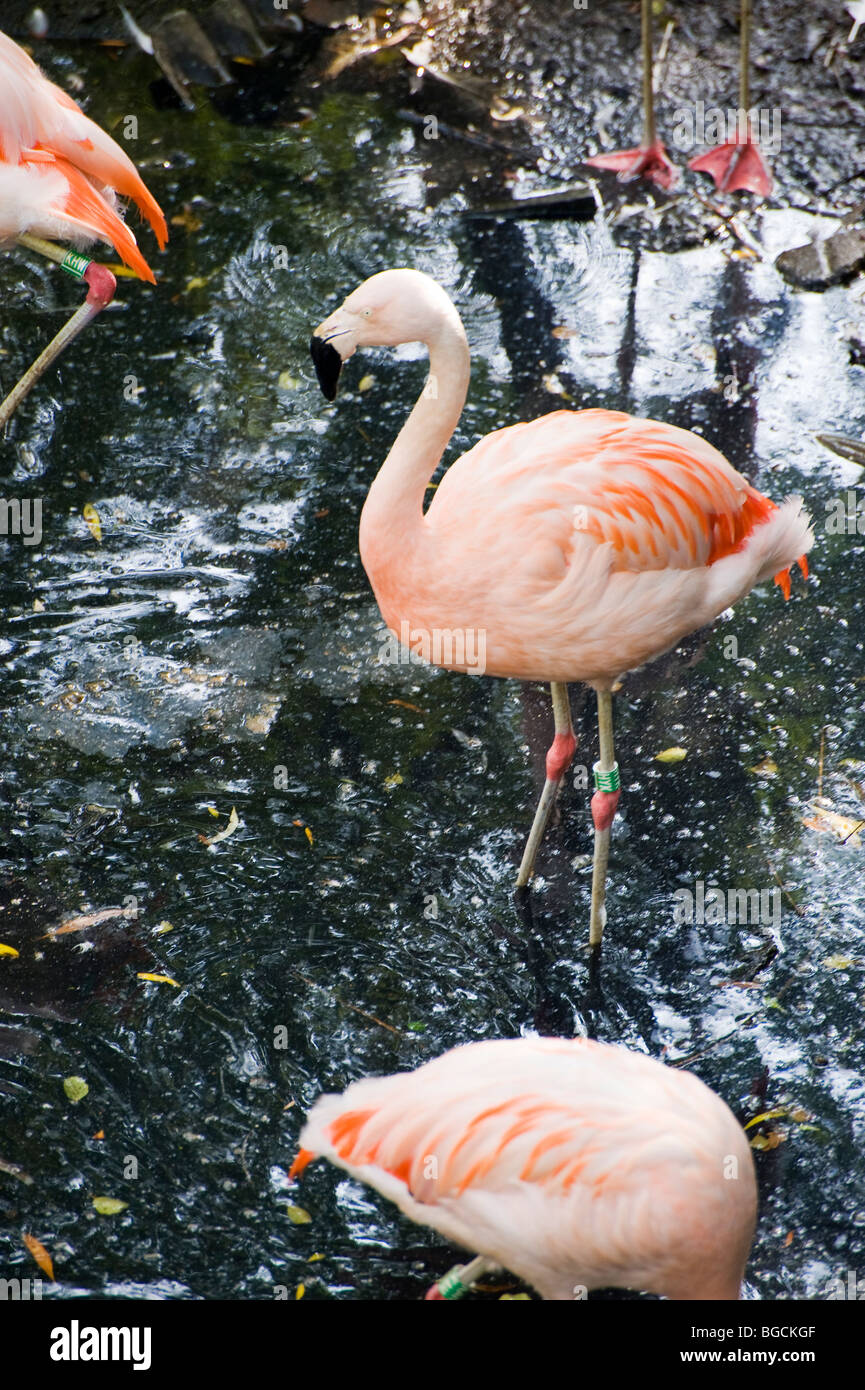Chilean Flamingo (Phoenicopterus chilensis), pink

Image details
Contributor:
Élan Images / Alamy Stock PhotoImage ID:
BGCKGFFile size:
49.9 MB (2.6 MB Compressed download)Releases:
Model - no | Property - noDo I need a release?Dimensions:
3407 x 5120 px | 28.8 x 43.3 cm | 11.4 x 17.1 inches | 300dpiDate taken:
2009More information:
Animal Chilean Flamingo Latin name Phoenicopterus chilensis Distribution South America from Chile to Argentina, Habitat Shallow, salty lagoons and lakes. Diet Small invertebrates such as insects, crustaceans and molluscs. Gestation 28-31 days, one egg per clutch. Longevity Around 10 years in the wild, up to 50 in captivity has been recorded. Status in the wild Most colonies are stable but are vulnerable to habitat destruction and disturbance. General characteristics The males are larger than the females, with greater flamingos weighing up to 4kg as opposed to the females 3kg. The 5 species of flamingos are well known by everyone for their long legs and their bright pink colouration. The pink colouration actually comes from the carotenoids in their diet. In the wild it is thought that it is a result of either algae consumed directly or secondarily via small animals. Captive flamingos often lose their pink colouring. They live in huge flocks numbering many thousand birds. They are very choosy about where they live, needing shallow, salty lagoons and lakes for breeding. These waters are often so caustic that they would strip the skin off a human leg in a matter of moments. Flamingo’s legs have developed especially tough skin. Unfortunately, if the soda is very concentrated it can crystallise around the bird’s limbs, immobilising them. The water is more concentrated around the edge, where the water evaporates, so the birds congregate in the centre. This means that they have virtually nothing to fear from predators. Perhaps the strangest adaptation of the flamingo is their bills. The flamingos feed with their bill upside-down underwater, opening it slightly and sucking water through by drawing back their tongue. The water passes through a coarse filter of bony plates which keeps out large particles. The flamingo then closes its bill and uses its tongue to force out the water through another finer filter which traps the particles of food.